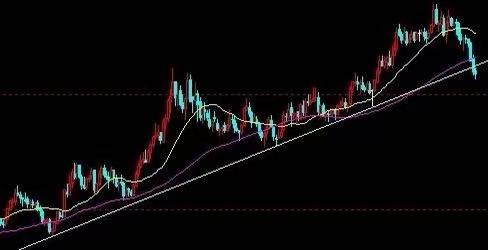Essential Reading for Feed Enterprises | The Importance of Futures for Feed Enterprises
What is futures

Futures are expectations of spot goods, and their initial creation was to mitigate operational risks associated with spot trading.
Simply put, it is to generate the expected price of a certain category in one month, three months, six months, or one year through sufficient market competition.
Futures trading is different from spot trading, as it is more of a price benchmark and also displays the expected price of the commodity in a few months. After all, spot trading is a back-to-back transaction, and it is rare to see clear future price expectations.
Futures and Feed Industry

For the feed industry, the importance of the futures market is constantly increasing, as futures directly affect the profits of many feed mills.
The profit of a feed mill, excluding various administrative, management, and operational costs, is directly determined by the prices of feed raw materials, feed sales prices, and processing costs. For the same feed mill, processing costs are fixed. So the raw material price and sales price of feed are very important.
Firstly, let's focus on the prices of feed raw materials. What are the raw materials for feed? Generally, it includes soybean meal, rapeseed meal, as well as miscellaneous meal such as cottonseed meal, sunflower seed meal, fish meal, amino acids, corn, and even wheat. Among these raw materials, soybean meal, rapeseed meal, corn, wheat, etc. have corresponding futures in China.
There are generally two types of feed factories in China. One is that they completely ignore futures and only determine their production and trading strategies based on spot prices, known as "one-sided gambling". This type of feed factory is mainly distributed in the north, with the Shandong region being the most concentrated. From the name 'betting on one side', it can be seen that focusing only on spot prices carries high risks and may result in significant profits and losses.
Another approach is to formulate strategies based more or less on futures, including the raw material procurement prices being reflected in the form of basis quotes, known as "hedging". This model places great emphasis on futures, with relatively low risk but also minimal potential profit and loss fluctuations. This type of feed factory is mainly distributed in the south, mainly concentrated in Guangdong.
The raw material procurement prices of feed factories, and even the core competitiveness of formula formulation, cannot be separated from the benchmark role of futures. Not to mention the delivery and receipt of goods.
Hedging in the feed industry

Due to the necessity of having spot inventory for feed mills to maintain operations, risks are inevitable in the event of price fluctuations in the market. Especially the world economy and government policies have a significant impact on controlling feed costs. So using futures for hedging is an important tool to avoid risks.
Hedging operations mainly involve agricultural futures, with varieties mainly including wheat, rapeseed meal, corn, soybean meal, etc.
Buy and hold value: pre-sale of spot goods+purchase of futures, and closing out multiple futures orders when purchasing spot goods in the later stage.
Sell time hedging: spot purchase+futures sale, when selling spot, close short positions in the futures market.
Comprehensive hedging: buying A-class raw materials in futures+selling B-class raw materials in futures. According to the price structure and inventory of different types of raw materials on the market, when calculating the price difference of raw materials with good returns, buy A raw material in the futures market and sell B raw material at the same time.
Hedging strategy: Feed raw materials account for as much as 80% -90% of feed costs. Therefore, the focus is on hedging feed raw materials, combined with comprehensive analysis of macro and fundamental factors. When using futures tools for hedging, the following strategies should be adopted.
a、 Believing that the current price is at a high point and there is a high probability of future price decline, choose the appropriate time to hedge.
b、 Believing that the current price is at a low point and there is a high probability of future price increases, this situation may require a small amount of hedging or no hedging.
c、 Believing that the present is the equilibrium point position and making unclear judgments about future price fluctuations makes it difficult to grasp the price during the selling period. Adopting a phased hedging approach, gradually selling futures contracts in the futures market to lock in profits.
The main purpose of using futures for hedging is to avoid price volatility risks, so it is necessary to choose contracts with strong liquidity, achieve fast trading, seize opening and closing opportunities, and timely hedge against the net exposure of spot holdings.
Futures prices and spot prices tend to converge in the long run, but in the short term, price deviations may occur due to market participants' emotional factors. To prevent price rebounds from affecting insufficient margin, companies should reserve sufficient margin.


Scan the code to follow the Mailun official account for more information about the feed industry



